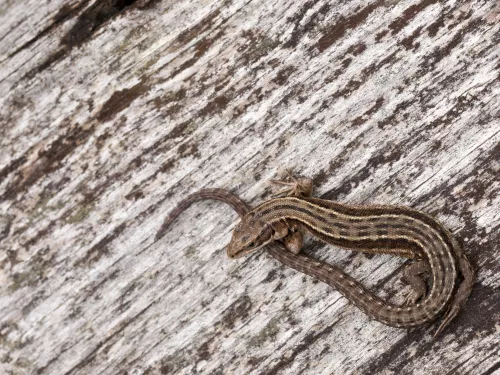Common knotgrass
Despite its name, Common knotgrass is not a grass, but is actually related to the docks. It has wiry stems that grow along the ground, and is a weed of waste ground, gardens and arable fields.
Despite its name, Common knotgrass is not a grass, but is actually related to the docks. It has wiry stems that grow along the ground, and is a weed of waste ground, gardens and arable fields.
Common laburnum is an introduced species, planted in parks and gardens. It is most recognisable in flower - its hanging bunches of yellow blooms giving it the name 'Golden rain'. It is highly poisonous.
The common lime is a tall, broadleaf tree that is a natural hybrid between the Large-leaved and Small-leaved Limes. It can be seen in a variety of habitats, and has been widely planted along roads and in parks.
If you’ve ever been rockpooling, you’ve probably seen a limpet or two! Their cone-shaped shells clamp onto rocks until the tide comes in, at which point they become active. Limpets move around eating algae using their tough tongue.

Look out for a common lizard basking in the warm sun as you wander around heathlands, moorlands and grasslands. You might even be lucky enough to spot one in your garden, too!
Common mallow is a handsome 'weed' of waste ground, roadside verges and gardens. Its deep pink, stripey flowers provide nectar for insects throughout the summer.
Also known as the 'green drake mayfly', the common mayfly can be found around unpolluted wetlands, such as lakes and rivers. It has transparent, lacy wings and three long 'tails'.
As the name suggests, the Common medium stonefly is found in gravelly upland rivers and streams, often on bankside stones and plants. There are 34 species of Stonefly in the UK, which are hard to tell apart.
The dark-blue flowers of Common milkwort pepper our grasslands from May to September. It can also appear in pink and white forms.
Common mouse-ear is a persistent 'weed' of fields and gardens, verges and hedgerows - all kinds of habitats. But, like many of our weed species, it is still a good food source for insects.
The common octopus is a highly intelligent, active predator. It even has a secret weapon - special glands produce a venom that it uses to incapacitate its prey!
The Common osier is a small willow tree that is found in fens and ditches, and on riverbanks. It has been widely cultivated and coppiced for its twigs, which are used in traditional basket-making.